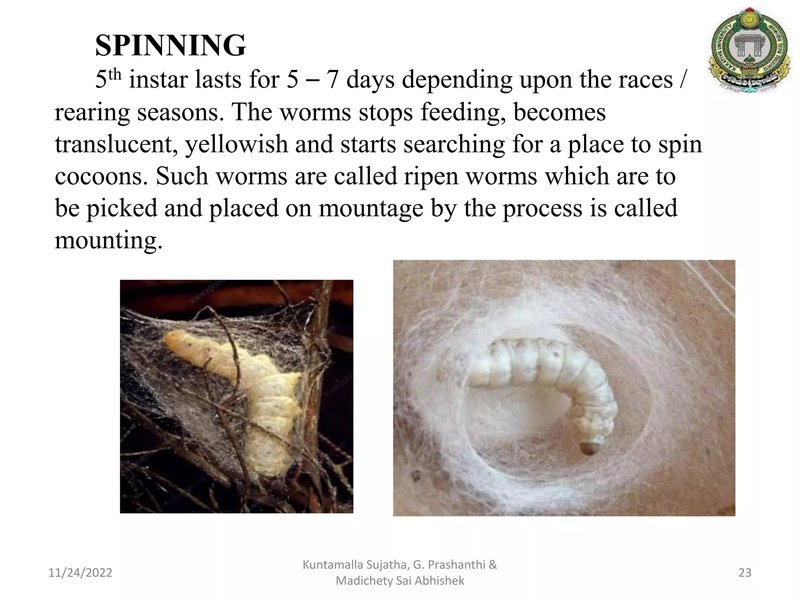
A silkworm rearing log can serve as your personal guide and diary through this journey. Just like a chef needs a recipe to create a delicious dish, you’ll find that a log can help you manage the nuances of silkworm care, feeding schedules, and health observations. Trust me, this log will become an invaluable tool as you familiarize yourself with the lifecycle of these fascinating creatures.
Why Keep a Rearing Log?
You might be wondering why a rearing log is essential for silkworms. After all, they’re just worms, right? Here’s the thing: keeping a log helps you track significant details that can impact your silkworms’ growth. This system will allow you to notice patterns over time, leading to better care.
A log will help you monitor various factors such as:
- Feeding Schedules: Silkworms eat a lot! Tracking what, when, and how much they eat can help you ensure they’re getting the nutrition they need.
- Growth Stages: Silkworms go through several stages, including eggs, larvae, pupae, and adults. Recording these changes can help you anticipate their needs.
- Health Issues: By documenting any signs of illness, you can take action quickly, improving your chances of successful rearing.
Moreover, keeping a rearing log offers you a chance to reflect on what works and what doesn’t. It’s a bit like journaling your experiences, making you more adept at handling silkworms as you go along.
What to Include in Your Silkworm Rearing Log
When you start your log, you might wonder what specific information you should include. While each person’s log will be unique, there are a few key sections that I recommend every beginner should consider.
1. **Date**: Always note the date of each entry. This helps you keep track of specific growth milestones.
2. **Feeding Records**: Document what type of leaves you fed them, how much, and how often. Silkworms thrive on mulberry leaves, so keep that in mind!
3. **Growth Stages**: Note the stage of development your silkworms are in—eggs, first instar, second instar, etc. This can help you identify any patterns over time.
4. **Health Observations**: If you notice anything unusual, jot it down! This could be anything from lethargy to discoloration.
By keeping these sections in mind, you can create a comprehensive log that provides a solid overview of your silkworm rearing journey.
Creating a Simple Rearing Log Template
Now that you know what to include, let’s talk about how to create your log. Whether you prefer a digital format or a classic pen-and-paper approach, having a template will streamline everything.
Here’s a simple structure to get you started:
| Date | Feeding (Type & Amount) | Growth Stage | Health Observations |
|---|---|---|---|
| [Enter Date] | [Enter Feeding Details] | [Enter Growth Stage] | [Enter Any Observations] |
Feel free to expand this template based on your observations. You might want to add sections for weather conditions, humidity levels, or any other environmental factors that could influence growth.
Tips for Maintaining Your Log
Keeping a log is one thing, but maintaining it can be a different challenge altogether! To help you stay consistent, consider these tips:
– **Set a Schedule**: Choose a regular time for logging your entries. It could be daily or every few days, depending on your needs.
– **Be Specific**: The more detailed your entries, the more useful your log will be. Instead of writing “fed leaves,” note the exact type of leaf and how many you used.
– **Use Visuals**: If you’re a visual learner, consider adding photos of your silkworms at different stages. This can also make your log more engaging.
By committing to your log, you’ll be amazed at how much you learn over time. It becomes a resource you can refer back to, helping you make informed decisions for future batches of silkworms.
Common Challenges in Silkworm Rearing
Like any hobby, raising silkworms comes with its challenges. Understanding these common issues will help you be better prepared and make your rearing experience more successful.
**Temperature and Humidity**: Silkworms thrive in specific conditions. If it’s too hot or humid, it can lead to diseases. Keeping your environment stable is crucial.
**Feeding Issues**: Sometimes, they may refuse to eat or become sluggish. This could be due to stale leaves or a lack of fresh mulberry. Always ensure they have access to quality food.
**Moulting Problems**: Silkworms shed their skin multiple times, known as moulting. If they’re struggling to moult, it might be due to low humidity. Make sure your environment is ideal for them.
By documenting these challenges in your log, you can identify patterns and potentially troubleshoot issues before they escalate.
Wrapping It Up: Your Silkworm Rearing Adventure Begins!
As you embark on your silkworm rearing journey, remember that keeping a rearing log is like having a roadmap. It helps you navigate through the ups and downs of this fascinating hobby. Not only does it keep you organized, but it also enhances your understanding of these incredible creatures.
So grab that notebook or set up your digital platform and start logging! With time, you’ll find that your efforts lead to growth—not just for your silkworms, but for your knowledge and skills too. Happy rearing!

